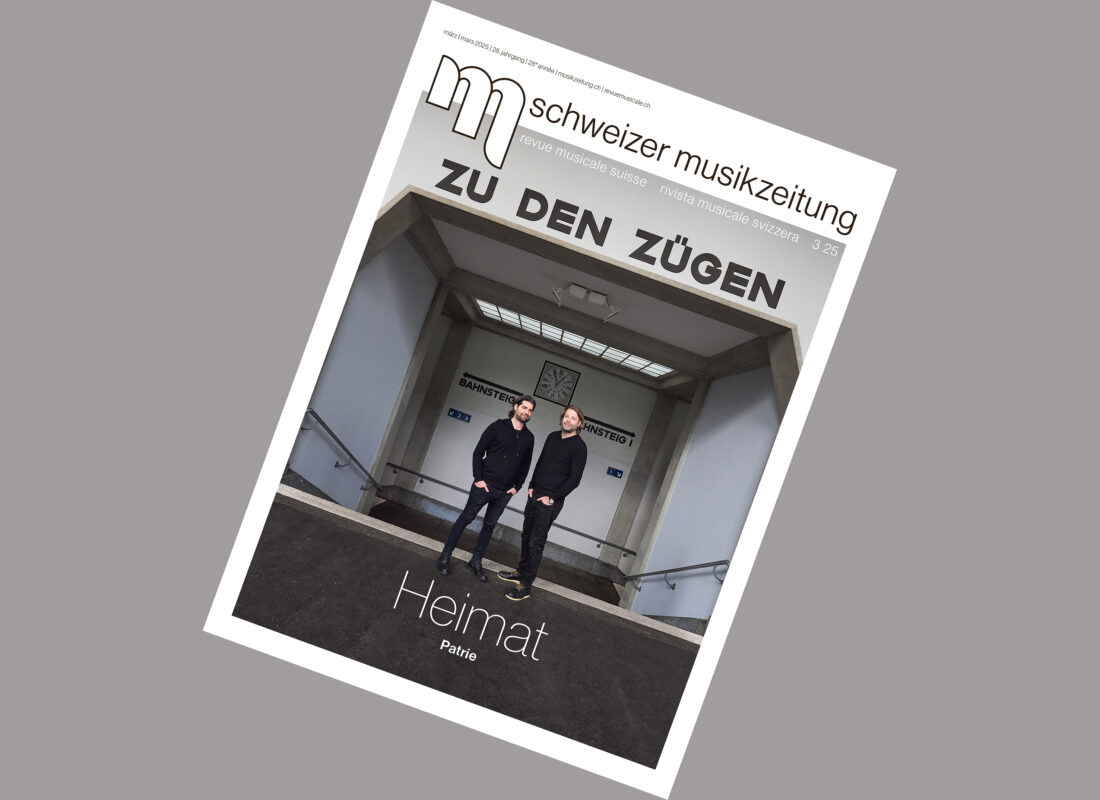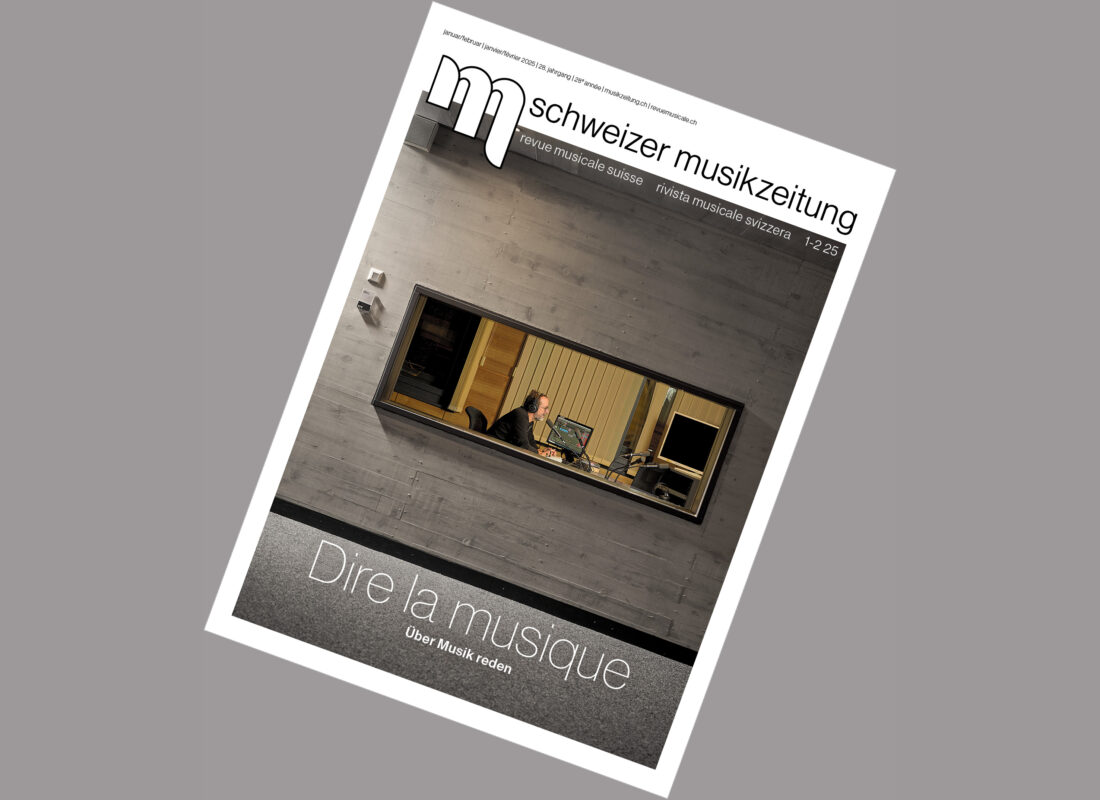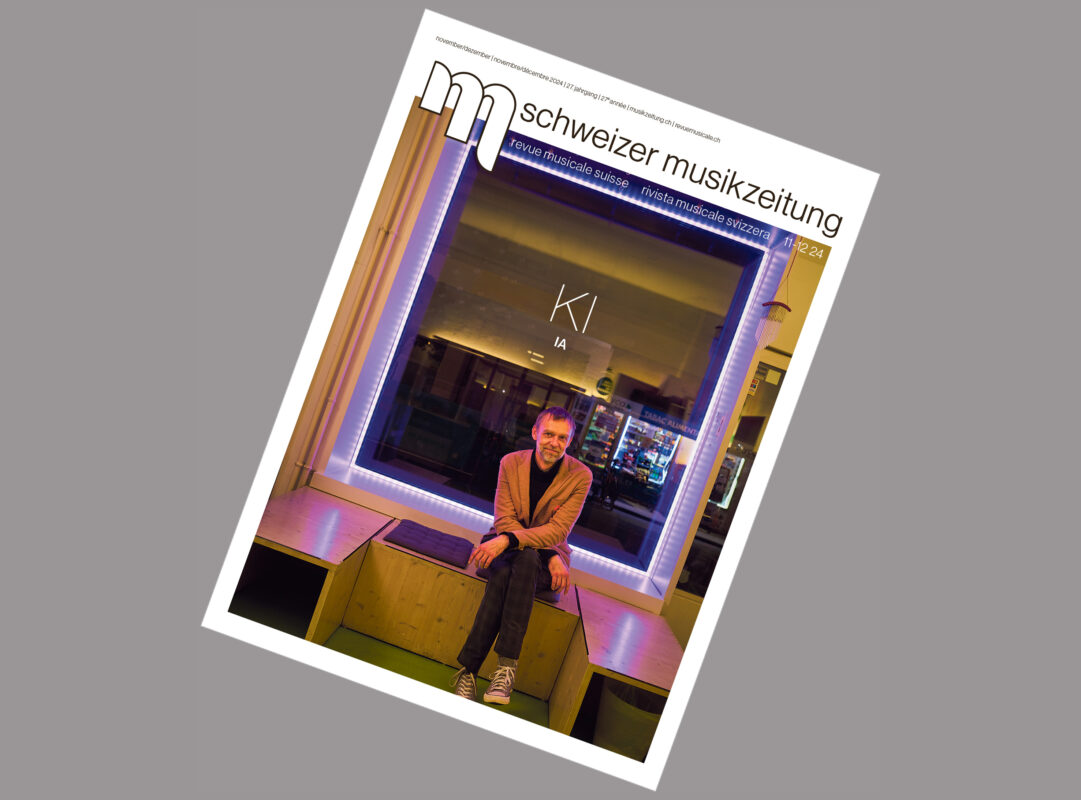Seepage tendencies
At first glance, new music and consumerism appear to be at opposite ends of the cultural spectrum. However, the focus on uncompromising novelty on the one hand and marketability on the other is not so clear-cut.


At first glance, new music and consumerism appear to be at opposite ends of the cultural spectrum. However, the focus on uncompromising novelty on the one hand and marketability on the other is not so clear-cut.
An earthworm feeds on soil and decaying plant material. It absorbs useful materials and excretes the crushed remains. This loosens up the soil, helps the plant decomposition process and produces fertile humus. This in turn is needed by the plants, which draw nutrients from it and turn the humus back into ordinary soil. According to the media theorist and philosopher Vilém Flusser, our society today functions in a similar way: as humans, we absorb "nature" and utilize it to create "culture". Over time, the cultural goods produced in this way become waste, they lose their value and decay back into "nature". Or at least to material that has become culturally useless and therefore valueless. This value-free material can now be recycled. An eternal cycle of value-free-utilization-valuable-worthless-value-free etc.
This model can be applied to the relationship between new music and consumption. I understand consumption as a mechanism that tries to sell products as widely as possible. New music is not known for designing its products for broad saleability. It is a type of music that tends to turn away from consumption. Instead, New Music sees itself as the spearhead of Flusser's exploitation process. It is, so to speak, the mouth that appropriates and valorizes things that are considered worthless - in this case, for example, sounds. The European and American music history of the 20th century can tell us a thing or two about the emancipation of dissonance and noise. At the beginning of the century, dissonance was established as a new tonal language by Arnold Schönberg's atonal and twelve-tone music, among others, and thus made valuable. Over the course of the century, mere noise was then culturally valorized as musical material.
But these achievements of New Music seep away over time - like the digestive process of the earthworm - and sink into other areas. The cluster-like dissonances of Stravinsky or Schönberg have become common techniques in film music and the "trademark sound" of terrifying horror scenes. The sampling of hip-hop can be seen as a successor to the tape techniques introduced by musique concrète. And in an SRF program on minimal music (Music of our timein May 2016), composer and conductor Irmin Schmidt explains that he founded the German krautrock band Can after coming into contact with the minimal music of Terry Riley and LaMonte Young in New York in 1966. Mind you, this was after he had studied with Karlheinz Stockhausen and György Ligeti.
New music is therefore not a self-contained area in which high culture is celebrated and consumption has no place. New music techniques and concepts are constantly seeping into other areas that are more inclined towards consumption.
But what about the other way around? Do sounds, methods and techniques from more consumer-oriented areas of music also penetrate the sphere of new music? One example: in 2013, Hannes Seidl composed a piece with the unwieldy title The last 25 years in No. 1 hits of the German annual charts represented by Karlheinz Stockhausen's study 2 5x. The piece can be seen as a "cover" of the Study II by Karlheinz Stockhausen (premiere 1954). The Study II is composed solely of electronically generated sine tones and is considered an early milestone in electronic music. Stockhausen created an elaborate score for it, which enables anyone to "recreate" the piece. Seidl did this for The last 25 years did. However, he didn't use sine tones as the basis for this, but rather the No. 1 hits in the German charts from 1988 to 2013.
On the one hand, Seidl's piece is an example of the fact that sounds from pop music are now also being used in new music, meaning that there is not only a tendency for new music to seep into consumer-oriented music, but also vice versa. On the other hand, the "earthworm" Hannes Seidl not only used pop hits from 1988 to 2013 as "fodder", but also Stockhausen's Study II. One could conclude from this that not only the pop hits of the day before yesterday, but also the Study II von Stockhausen have now become worthless "waste". At this point, however, it should be noted that Flusser's earthworm model is always based on a certain perspective. As far as complexity, striving for renewal, formalism or elitism are concerned, for example, New Music belongs to the spearhead of music. As far as categories such as sales figures or radio suitability are concerned, the pop charts would beat New Music hands down. From this perspective, both Stockhausen's Study II as well as Seidl's The last 25 years pretty worthless.
Hannes Seidl combines in The last 25 years The recycling cycles of new music and pop music in a critical way. By recycling the Stockhausen piece using pop hits, he refers to the classic status of Study IIwhich - according to the mechanisms of pop music - can therefore be covered. At the same time, he ascribes a certain outdated aesthetic to the piece, which he tries to renew in an ironic way by using the already outdated pop hits. Both the No. 1 hits and the Study II are passé. But the half-lives are different.
The parallels go even further. New music is certainly not subject to the mechanisms of the consumer-oriented market in the same way as the music of the latest pop stars, but even noble new music is not entirely free of sales arguments. Although it is largely created in a space protected by subsidies and endowments, promotional aspects also play a role in New Music. However, success manifests itself less in ticket and CD sales than in the interest and willingness of cultural committees, foundations and competition juries to provide funding.
This raises the question of whether New Music should not have the task of addressing and questioning these wishes of jury members, consumers, etc. rather than satisfying them. According to Clement Greenberg's famous essay from 1939 Avant-Garde and Kitsch imitates and thematizes the avant-garde (which may include New Music), which Processes of art, while its counterpart, kitsch, the Effects imitates art. Accordingly, new music that still deserves the "new" in its name must relate to the processes of art and today's artistic landscape. Quoting, questioning and criticizing one's own discipline is therefore a necessary condition for interesting results. This goes hand in hand with Seidl's insight that new music and consumption are not quite as antagonistic as one might think.
Literature
Vilém Flusser: The information society as an earthworm, in: Gert Kaiser, Dirk Matejovski, Jutta Fedrowitz: Culture and technology in the 21st centuryt, Frankfurt a.M. and New York 1993, pp. 69-80.
Hannes Seidl: The last 25 years in No. 1 hits of the German annual charts represented by Karlheinz Stockhausen's study 2 5x; Excerpts and more information at: http://studios.basis-frankfurt.de/works/die-letzten-25-jahre-/ [viewed: July 4, 2016].
Hannes Seidl: New. On the economy of new music, in: Art music 13 (2010), S. 46-52.
Clement Greenberg: Avant-Garde and Kitsch, in: Partisan Review 6/5 (1939), S. 34-49.
Jaronas Scheurer
... is a Master's student at the University of Basel (musicology and philosophy), assistant lecturer at the Basel Musicology Seminar and music journalist.








